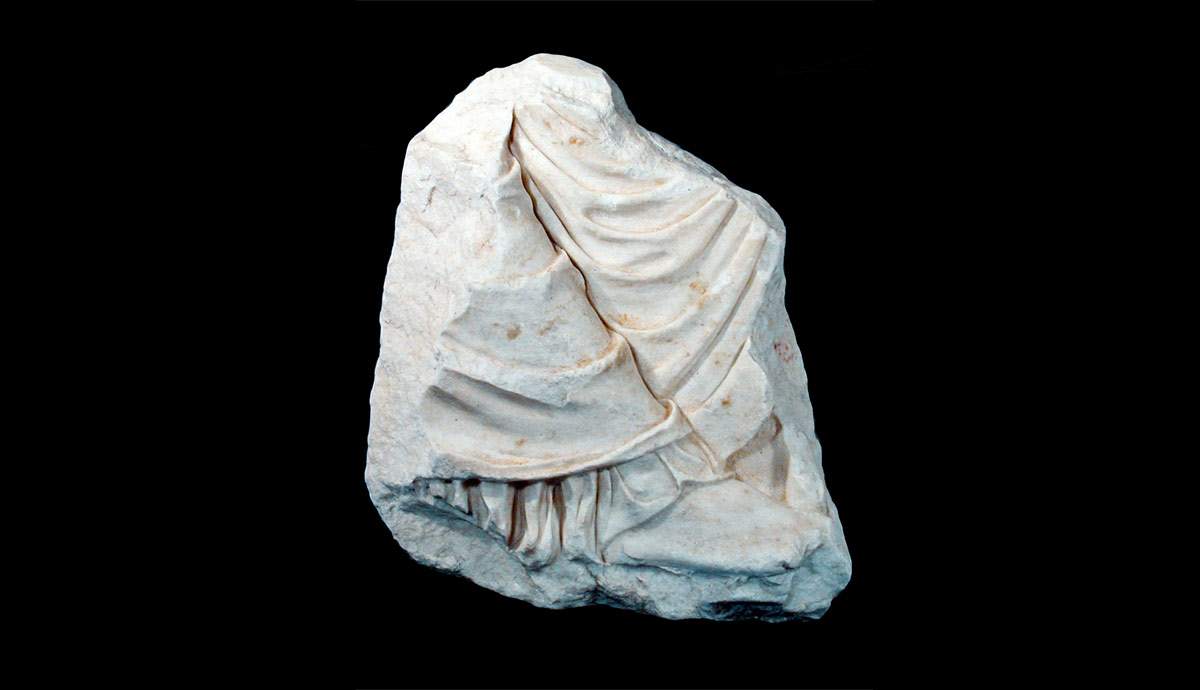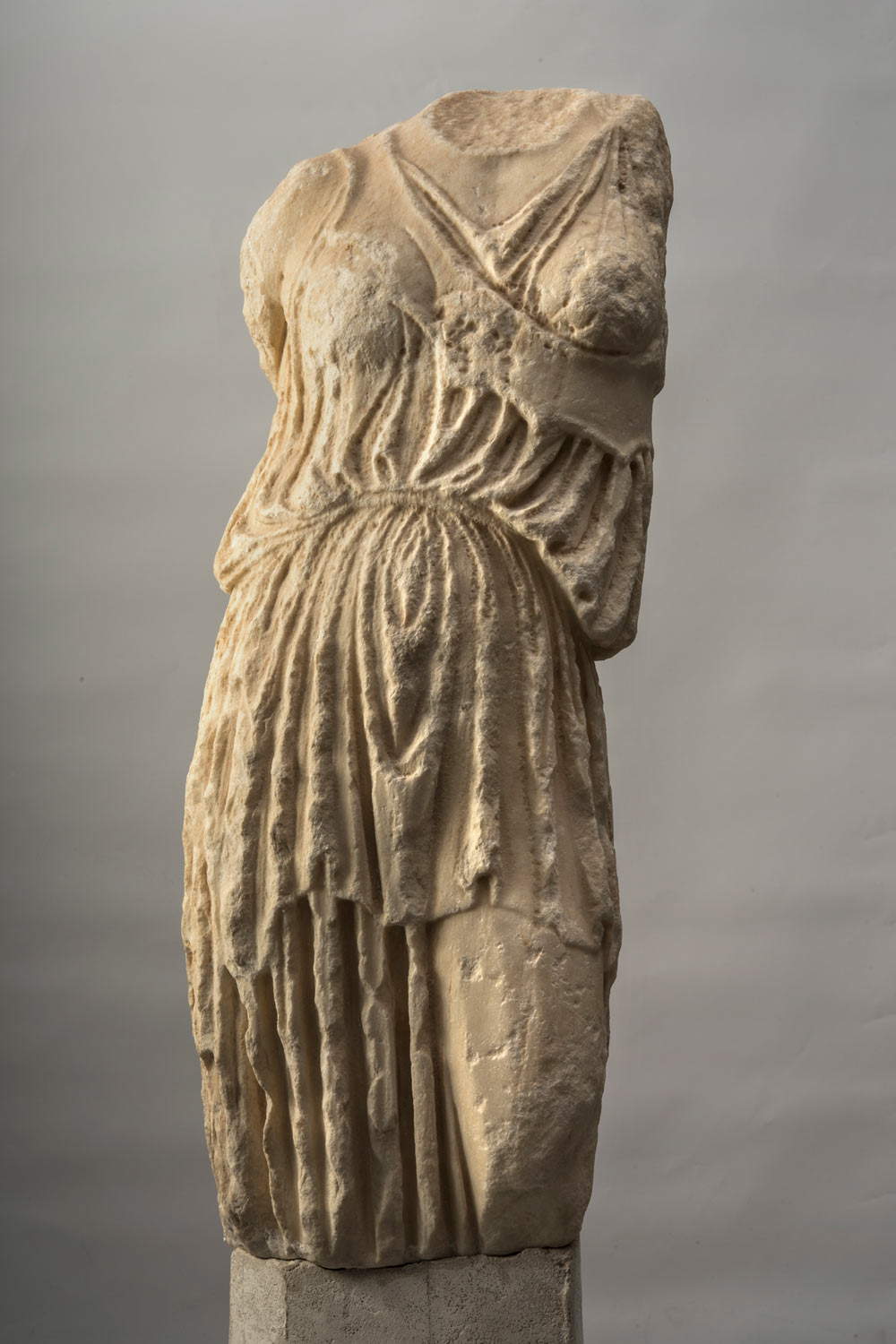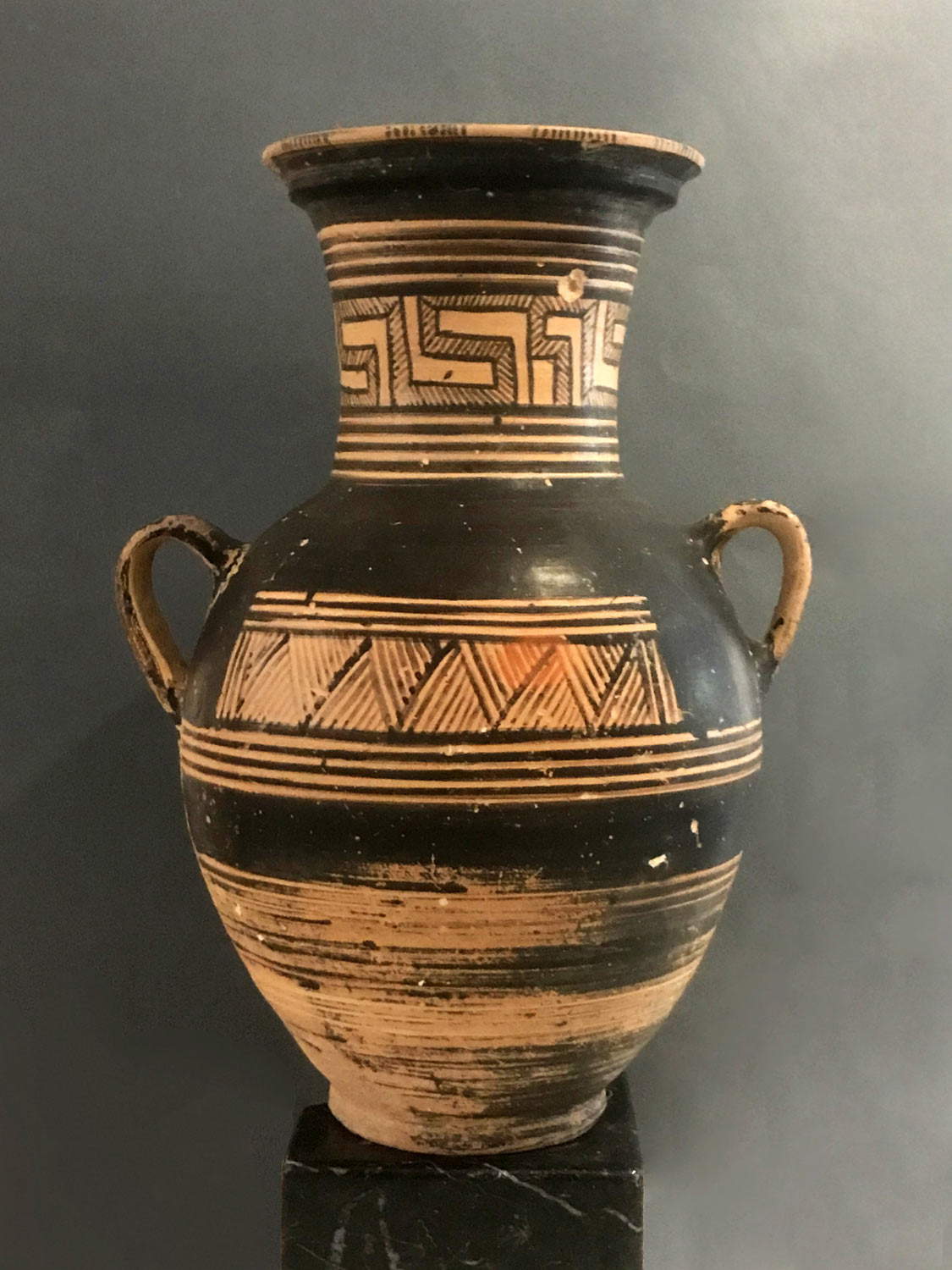Official, Palermo Fragment returns to Greece for 8 years. Two works arrive in return
It’s official: as we had anticipated last Dec. 2, an agreement has been reached between Sicily and Greece for the temporary return to Athens of the so-called "Palermo Fragment,“ or the portion of a slab belonging to the Parthenon’s eastern frieze, currently housed in the A. Salinas Regional Archaeological Museum. Salinas in Palermo. It is the so-called ”Fagan Exhibit," a Pentelic marble fragment depicting the foot of either the goddess Peitho or Artemis (goddess of the Hunt) seated on a throne. The gesture was desired by the Regional Councillor for Cultural Heritage and Sicilian Identity, Alberto Samona, and shared with the Greek Minister of Culture and Sports, Lina Mendoni. For Greece, the agreement has a highly symbolic value: Sicily, in this way, is, in fact, leading the way on the issue of the return to Greece of the Parthenon relics, making its own decisive contribution to the debate that has been going on for some time worldwide.
Born out of the interlocution between the regional government and the government of Athens, the agreement was signed by the Regional Archaeological Museum “A. Salinas” of Palermo and the Acropolis Museum of Athens, pursuant to Article 67 of the Code of Cultural Heritage and Landscape, which provides for the multi-year transfer and exchange of archaeological finds between the two prestigious museum institutions, respectively directed by Caterina Greco and Nikolaos Stampolidis. Signed according to Italian law, the agreement stipulates that for a period of four years, renewable once, the Salinas will transfer to the Acropolis Museum in Athens the fragment belonging to the Parthenon, currently kept in Palermo because it is part of the archaeological collection of English consul Robert Fagan, purchased by the Royal University of Palermo in 1820. In return, two very important artifacts from the Acropolis Museum’s collections will arrive in Palermo from Athens, each for a period of four years: these are an important headless statue of Athena, datable to the end of the fifth century B.C., and a geometric amphora from the first half of the eighth century B.C. In addition, the agreement also provides for the organization of joint initiatives to be carried out in partnership by the two museums on topics of cultural interest of international scope.
Sicily’s desire, however, is for the indefinite return of the find to Greece. In this regard, the Sicilian Region, in addition to promoting the cultural agreement of mutual enhancement between the two museums, has asked the Ministry of Culture of the Republic of Italy for a path leading to the concretization of this possibility: the file has already been hinged and is currently being discussed within the “Committee for the Recovery and Restitution of Cultural Assets” established at the ministry.
“The return to Athens of this important Parthenon artifact,” emphasizes the Regional Councillor for Cultural Heritage and Sicilian Identity, Alberto Samonà, “goes in the direction of the construction of a Europe of Culture rooted in our history and identity: that Europe of peoples that sees us deeply united with Greece, as both bearers of ancient and universal values. And for that matter, the multiple and pregnant testimonies of Greek culture present in Sicily are confirmation of an ancient and deep bond. Thanks to the Musumeci government, Sicily returns to the center of a Mediterranean dimension, in which the common future passes through dialogue and relations with the countries bordering the ”Mare nostrum.“ The collaboration agreement with the Acropolis Museum in Athens will also allow us to put in place common cultural initiatives of great depth and international relevance that will give the right visibility to our Region.”
“I would like to express,” emphasizes the Minister of Culture and Sports of the Republic of Greece, Lina Mendoni, “my deepest gratitude to the Sicilian Regional Council and its President Nello Musumeci, as well as to the Regional Councillor for Cultural Heritage and Identity of Sicily Alberto Samonà. Our collaboration so that the fragment of the Eastern Frieze of the Parthenon, now kept at the Regional Archaeological Museum ”A. Salinas“ in Palermo, could be exhibited for a long period at the Acropolis Museum together with its natural context, has been impeccable and constructive. Above all, I would like to express here my gratitude for the tireless and systematic efforts of the Sicilian government and Councillor Alberto Samonà for undertaking the procedure toward legal agreement under the Cultural Heritage Code of the Republic of Italy so that this fragment can permanently return to Athens. From November 2020, when the discussions between us began, until today, Councillor Samonà has always declared in every way his love for Greece and its Culture. Overall, the Sicilian government’s intention and aspiration to permanently repatriate the Palermitan Frieze to Athens only reconfirms and reinforces even more the long-standing cultural and brotherhood ties of the two regions, as well as the de facto recognition of a common Mediterranean identity. In this context, the Hellenic Ministry of Culture and Sports begins with great pleasure its collaboration with the Regional Archaeological Museum ”A. Salinas“ in Palermo, not only for the exhibition at it of important antiquities from the Acropolis Museum, but also for future general actions and initiatives. With this gesture, the Government of Sicily points the way for the definitive return of the Parthenon Sculptures to Athens, the city that created them.”
“I wish to express the utmost satisfaction,” adds Caterina Greco, Director of the Regional Archaeological Museum A. Salinas, “for the achievement of a goal that I had set myself since my arrival at the Salinas Museum two years ago. Bringing back to Athens the fragment of the Parthenon frieze that only in 1893 Walter Amelung recognized as an Attic original wrongly confused among the marbles recovered by Fagan during his 1808 excavations at Tindari, in fact means not only returning to Greece a piece of its most illustrious archaeological history, but also shed new light on the complex and fascinating story of nineteenth-century collecting, which distinguishes our oldest museums and of which the evidence of the presence in Palermo of the ”Fagan slab“ represents one of the most intriguing episodes.”
“The landing of the Palermo Frieze at the Acropolis Museum,” emphasizes the director of the Acropolis Museum in Athens, Nikolaos Stampolidis, “is extremely important especially because of the way in which the Government of the Sicilian Region, now led by President Nello Musumeci, wanted to make possible the reunion of the Fagan Frieze with those preserved at the Acropolis Museum. This gesture, already so significant in itself, is further intensified by the willingness on the part of the Sicilian Regional Government, represented here by the Councillor for Culture and Assets of Sicilian Identity Alberto Samonà, who wished, within a relationship of brotherhood and common cultural roots that unite Sicily with the Hellas, to undertake at the Italian Ministry of Culture the intergovernmental procedure for the decemanization of the Palermo Frieze, so that it may remain permanently sine die in Athens, at the Acropolis Museum its natural place. In this way it will be our beloved sister Sicily that will pave the way and point the way for the restitution to Greece also for the other Parthenonian Friezes kept today in other European cities and especially in London and the Britisch Museum. This will, which is a shining example of civilization and brotherhood for all peoples, is also in a very happy and emblematic cultural union with the September 29, 2021 decision expressed by UNESCO in regards to the return to Greece of the sculptures that are at the London Museum.”



The history of the Palermo Fragment and the attempts to return it to Greece
The Palermo Fragment, which arrived at the beginning of the 19th century in the hands of the English consul Robert Fagan under circumstances that are not fully clarified, upon his death was bequeathed to his wife, who subsequently sold it between 1818 and 1820 to the Royal Museum of the University of Palermo, of which the Regional Archaeological Museum “Antonino Salinas” is the heir.
Already in the past there have been interlocutions aimed at the return to Athens of the fragment of the Parthenon frieze, and in particular between 2002 and 2003, on the occasion of the state visit to Greece of the President of the Republic Carlo Azeglio Ciampi and in view of the realization of the 2004 Olympics in Athens, a debate was opened on the “return” of the artifact. And again in 2008, on the occasion of the inauguration of the New Acropolis Museum in Athens, negotiations were resumed between the Hellenic Ministry of Culture and the Italian Ministry of Cultural Heritage, through the mediation of then-President of the Republic Giorgio Napolitano, who had said he was in favor of the return of the fragment to Greece; but even on that occasion only the result of lending the Parthenon fragment to Athens for a year and a half, from September 2008 to March 2010, was achieved. After its return to Sicily, in the following years a veil fell over the matter of the permanent return of the find and it was no longer talked about, except confidentially among insiders.
The agreement signed between the two museums today grasps an achievement that demonstrates Sicily’s willingness to proceed on the path it has taken, favoring the definitive return to Athens of the fragment of the Parthenonian frieze, and sealing the close cultural collaboration between two prestigious museum institutions, both with long and ancient traditions.
The Statue of Athena and the amphora that will arrive at the Salinas Museum from Athens
The statue (Akr. 3027), 60 centimeters tall and made of Pentelic marble, depicts the goddess Athena dressed in a peplos marked by a belt worn on her waist. She wears a narrow aegis arranged transversely across her chest, originally decorated with a gòrgon in the center, which has been lost. The figure supports the weight of his body on his right leg, while with his left arm he probably leans on a spear; the supple pose and the soft, enveloping rendering of the clothing are typical of the Attic style of the last twenty-five years of the fifth century BCE, influenced by Parthenonian models (“Stilericco”).
Theamphora (1961 ΝΑΚ 196), intact and large in size (41.5 centimeters high), is an important specimen from the category of geometric pottery, a production characteristic of Athenian factories of the early Archaic period, marking the emergence of Athens among the various polis of Greece. It is an amphora used as a cinerary vessel, found in 1961 in Tomb 5 discovered near the southern slopes of the acropolis, and represents a typical Middle Geometric II vessel, with an ovoid body, high flared neck ending in an outward-facing rim, and two small vertical handles on the shoulder. The largely black-painted decoration includes a band on the neck bearing a meander outlined between horizontal stripes, while a large metopal box with aligned triangles is painted on the belly of the vessel; the lower part of the body and the handles are decorated with thin parallel stripes. The unmistakable shape and style, typical of this phase of Attic pottery, denote its very early chronology, dating from the first half of the 8th century B.C. (800-760 B.C.): a period, that is, when the Greek colonization of Sicily had not yet begun, from which only later did the influx of Greek materials to our island derive.
The arrival in Sicily of these two significant finds from the collections of the Acropolis Museum marks a decisive step change in cultural relations between Sicily and Greece. It is, in fact, the first time that from the famous Athenian museum original testimonies of the history of the city that has profoundly marked, with its art, the entire Western culture come to Sicily and to the Salinas for a long-term exhibition.
 |
| Official, Palermo Fragment returns to Greece for 8 years. Two works arrive in return |
Warning: the translation into English of the original Italian article was created using automatic tools. We undertake to review all articles, but we do not guarantee the total absence of inaccuracies in the translation due to the program. You can find the original by clicking on the ITA button. If you find any mistake,please contact us.





























